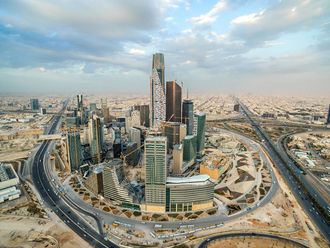
I moved to the UAE to set up a medical tourism department in a leading private hospital eight years ago. Those days, the UAE was a country that referred its citizens abroad for treatment and also a destination that wanted to attract international patients.
It is worth reflecting on how the UAE has evolved from an outbound referral market to one of the leading destinations attracting medical tourists. In the last decade, the UAE started making and attracting investment in healthcare, research, and medical education, as well as creating favorable conditions for healthcare professionals to settle in the country.
The transition from being a referral source had begun long before the pandemic restricted international travel. The Dubai Health Authority reported that the total number of treatment cases abroad decreased 74.8 per cent in five years, from 2,913 patients in 2015 to 733 patients in 2019. During the pandemic, major destinations closed their doors to patients from around the world, changing the outlook for the UAE citizens considering treatment abroad.
Factors leading to declining outflow of UAE patients Temporary suspension of government-sponsored programme for treatment abroad: With the pandemic, medical tourism came to a complete halt as leading destinations struggled to cope with the surge of cases while at the same time funding agencies focused on protecting their citizens from COVID-19.
The post-Covid shift in travel preferences: The waiting list for an appointment, entry restrictions and long flying hours changed the traditional mindset against travel for treatment unless unavailable at home.
‘Glocalization’ of healthcare: Renowned global healthcare organizations are partnering with UAE-based providers to offer telemedicine and other healthcare delivery models, such as visiting physician programmes, to examine, operate and follow up on patients closer to home.
Quaternary care services: The unavailability of quaternary care services within the UAE was one of the factors that led patients to travel abroad. Over the past decade, the UAE has built capacity in advanced oncology and multi-organ transplantation through concerted efforts with public and private investment in healthcare. This has also been made possible by the organ donation laws passed in the country in 2016, which have saved more than 400 lives through transplants in the last five years - liver, kidney, heart and lung, pancreas, and small intestine.
International travelers have long identified the UAE as a wellness destination (health screenings, aesthetics, fertility, and dental care). The controlled COVID-19 numbers prompted people awaiting treatment to consider the UAE as an option. Hence, COVID-19 proved to be a catalyst in accelerating the UAE's vision of becoming a major medical tourism destination. According to Dubai stats, the number of medical tourists has increased by 145 per cent, from 270,000 in 2017 to 630,000 in 2021.
Factors attracting medical tourists to the UAE:
World-class hospitals – The presence of international brands along with strong domestic providers with international accreditations, such as JCI, make the UAE an appealing destination. The availability of healthcare services at a range of prices attracts both luxury and cost-conscious consumers. The UAE’s healthcare workers have experience in some of the best institutes in the world. They represent different schools of thought and practice evidence-based medicine that provides patients with the best possible treatment options.
Strategic location: The UAE has the advantage of being at an 8-hour flying distance from two-thirds of the world's population. It has good air connectivity offered by premium and budget airlines. In addition, the UAE offers convenient visa options such as tourist, visitor, and medical tourist visas.
UAE’s experience: The UAE’s potential as a medical tourism destination is further supported by the wider tourism ecosystem in the country: three mega and safe cities, accommodation options ranging from budget to star categories, various modes of transportation, and shopping and sightseeing opportunities.
Two government-backed exclusive medical tourism offices - DXH (Dubai Health Experience) and ADMT (Abu Dhabi Medical Tourism) - are tasked with promoting Dubai and Abu Dhabi’s healthcare offerings. They have spearheaded discussions with various governments, insurance companies and other medical tourism stakeholders to encourage inbound medical tourism.
What fuels medical tourism?
For some, it is the unavailability of services in their home country, the high cost of medical care, and the long waiting times, and for others, it is simply privacy or the reason that they can afford anything in the world. Consider the examples of the US and India - a patient from the US travels abroad to take advantage of the cost of services that are either not covered by insurance or are exorbitantly high.
On the other hand, there are wealthy Indians who fly out of India for confidentiality reasons, while these two destinations attract a very high volume of international patients. This suggests that even if a country has an excellent healthcare system, a certain number of patients still seek treatment abroad.
The pandemic has brought realignment in the flow of medical tourists, and the UAE has a great opportunity to capitalize on it. The controlled outflow of medical tourists from the UAE will save foreign exchange and encourage healthcare providers to invest more in innovation, technology, and new service lines, leading to a further inflow of international patients adding lots to the economy.













